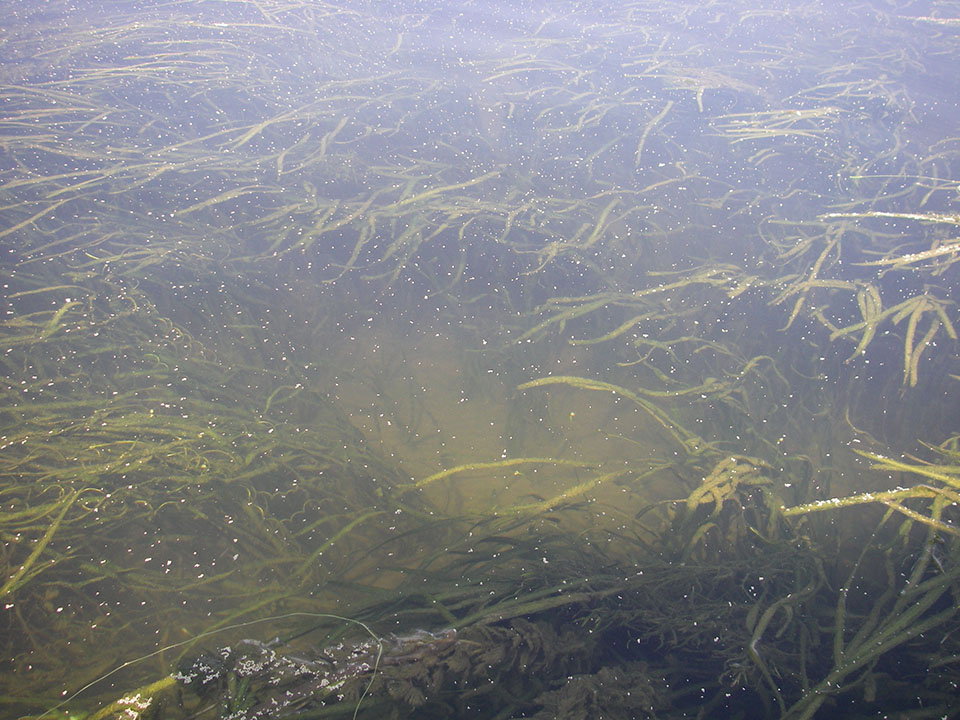Oysters and Celery Aren't Only for Holiday Stuffing!
Oysters and celery (the wild, aquatic variety) provide shade, shelter, and food for the aquatic residents of rivers and bays.
Roasted birds on the holiday table are often stuffed with a blend of breadcrumbs, herbs, and spices that includes chopped celery. Many stuffing recipes even call for chopped oysters, a briny bivalve that for centuries has been served raw on the half shell as a token of good luck in the coming year.
But did you know that oysters and “celery” (the wild variety, a common seagrass) also serve as vital underwater habitats?
As you celebrate the season, consider the diverse roles of oysters and celery (both wild and cultivated). Far more than delectable treats on the holiday menu, they provide protective lairs and nutritious fare for our fragile aquatic communities.
Oysters

A cluster of bottom-cultured oysters grows in eelgrass in Willapa Bay, Washington.
Oysters grow naturally on the bottoms of bays and rivers, and are cultivated for food and pearls in clusters called oyster beds. Over time, the mollusks’ rough, irregular shells form large, complex reefs where many aquatic species, such as fish and crabs, hunt for food and hide from predators.
Wild Celery

Wild celery and its white flower and its pollen on surface. Credit: U.S. Geological Survey
Because they are filter feeders, oysters help keep the water clean, promoting the growth of underwater grasses such as wild celery (also called water celery, and related in common name only to the crunchy vegetable stalks we stuff with cream cheese and peanut butter). Wild celery grows in the coarse, sandy soil of estuaries such as rivers, bays, and streams. Small fish and shellfish are attracted to its long, ribbon-like stalks, which serve as nursery beds and provide shade, shelter, and abundant food for the young.
Wild celery is also a preferred food of many waterfowl, which voraciously consume its winter buds and roots. In fact, the canvasback duck’s scientific name, Aythya valisineria, derives from the scientific name of wild celery, Vallisneria americana.